- Album Songs recorded during this session officially appear on the Now And Then / Love Me Do (Black 7" Vinyl) 7" Single.
- Studio:
- Capitol Records Building, Los Angeles, USA
Timeline
More from year 2022
Some songs from this session appear on:
Spread the love! If you like what you are seeing, share it on social networks and let others know about The Paul McCartney Project.
About
“Now and Then” is an unfinished song by John Lennon, recorded as a solo piano/vocal demo in 1977 at his home in the Dakota Building, New York City.
The Beatles considered the song as a potential third reunion single for their 1995 autobiographical documentary project “The Beatles Anthology“, following “Free as a Bird” and “Real Love“, but it was shelved until 2022 when Paul McCartney decided to complete it with the help of Ringo Starr and producer Giles Martin.
Using the demixing technology used by director Peter Jackson for his 2021 documentary “The Beatles: Get Back“, it was possible to extract John’s voice from the original demo. Paul and Ringo added some new overdubs in 2022 and guitar tracks by George Harrison from the abandoned 1995 sessions were added.
On April 30, 2022, Paul McCartney and Giles Martin went to Capitol Tower in Los Angeles to record some string overdubs and complete the track.
In Los Angeles, Paul oversaw a Capitol Studios recording session for the song’s wistful, quintessentially Beatles string arrangement, written by Giles Martin, Paul and Ben Foster. Paul and Giles also added one last, wonderfully subtle touch: backing vocals from the original recordings of “Here, There And Everywhere,” “Eleanor Rigby” and “Because,” woven into the new song using the techniques perfected during the making of the LOVE show and album. The finished track was produced by Paul and Giles, and mixed by Spike Stent.
From TheBeatles.com, October 26, 2023
What an immense honor it was to conduct a session for Paul McCartney this past Sunday at the iconic Capitol Studios. Thanks to Ben Foster and Giles Martin for having me, and Gina Zimmitti for the truly wonderful ensemble of musicians. One for the books, indeed!
Jerome Leroy – From Session with Paul McCartney at Capitol Studios — Jerome Leroy | Composer, May 6, 2022
I’d been vaguely thinking strings might be a good thing. The Beatles did lots of string things, you know: Strawberry Fields, Yesterday, I Am The Walrus… We wanted to go to Capitol Studios because that had been EMI, and it was sort of “Beatley.” Giles worked on an arrangement like Giles’ dad [original Beatles producer George Martin] would’ve done in the old days. We had to put the music out on the stands for the musicians, but we couldn’t tell ’em it was a new Beatles song. It was all a bit hush-hush. We pretended it was just something of mine.
Paul McCartney – From documentary “Now And Then – The Last Beatles Song“, 2023
I was basically ripping off my dad as much as possible. But listen, if I can’t rip off my dad in a string arrangement for a Beatles record, when can I do it?
Giles Martin – From rollingstone.com, October 26, 2023
The orchestral scoring session you and Paul did at Capitol Studios in L.A. took place quite a while ago, we know. There’s such a thing as NDAs, but it’s still surprising that that many people could be involved and keep a secret, until Paul himself first spoke about it this spring.
Well, the orchestra didn’t know what they were playing on. They weren’t aware that this was a Beatles recording. I think they thought it was just a Paul McCartney project that I was working with him on. It’s one of those things that I didn’t really think about at the time. I’m thinking about the string arrangement, the players playing the right thing, all that stuff. But they weren’t privy to the information, so they had nothing to hide. A little knowledge is a dangerous thing. Not in this case: A little knowledge actually worked quite well. But it is funny how we finished this last year, and it hasn’t got out.
Speaking of the orchestral part, why did it feel important to do an orchestral part, in the ultimate expansion of John’s demo? Of course great orchestral parts are a big part of your lineage.
Paul came and played me the track he’d been working on, and I said, “Maybe we should add some strings to it.” He was like, “Well, yeah, we should try it, but I don’t want to make it too corny.” Also, I think he was nervous about us collaborating away from the other Beatles, funnily enough. How much do you add without them? I just said to him, “Why don’t we do something, and then we can always delete it? No one will know.” There’s no teams that hear stuff. It was just me and Paul, at that stage — and Ringo, obviously, and then Sean and Yoko and Olivia. It’s a very small network, so therefore you have that freedom to try things.
With the strings, I thought I might as well rip off my dad — which I did do. My dad was an amazing string arranger. If I’m gonna rip off my dad, you might as well do it for the last Beatles song. There were some times where Paul was like, “We shouldn’t do that, you’re going a bit too far, or “We should try and do this.” Because, even with my dad, even with “Yesterday,” the first string thing (with the Beatles), Paul would have very, very strong ideas about how you want things to sound. And generally, obviously, it’s the Beatles — he’s right. I’m pleased we added the strings. I just wanted it to be as Beatles as possible, basically. I wanted people to listen to this and go, “Yeah, this is a Beatles record.”
Giles Martin – From variety.com, November 2, 2023
When you went back to what was done in the studio in the mid-‘90s, even though the time they spent working on the song then was short, was there enough of George on there that you were really able to use something of George’s?
More than something of George’s. George was playing acoustic and electric guitar on it. What was really interesting is what Paul would say to me [in the process of] doing the strings and then going through the arrangement. The strings are quite rhythmical, as you heard, the sort of chuggy “Eleanor Rigby” style kind of strings I’ve got in there. And Paul was very deliberate in saying to me, “Listen carefully — isolate George. Play it to me. We need to make sure that we are empathetic to the rhythm that George is trying to lay down here.” Because that’s what he was good at. That’s what I learned from Paul. You know, (George is) not here to say he doesn’t like the string arrangement. So let’s make damn sure that we respect his rhythm playing on the electric guitar when he’s playing it.
Giles Martin – From variety.com, November 2, 2023
We recorded the string section in Capitol Studios, and I worked with a guy called Ben Foster, who Paul and I have worked with for a long time, a conductor-arranger. We got in quite a big string section, a much bigger string section than Beatles would normally have had. And I did pretty much realize, even though it seemed like a waste of money — and I know my dad would roll over in his grave… On the bulk of the song, we didn’t use all the strings, because it sounded too posh to be Beatles. It sounded too schmaltzy. But then you get to the (slide guitar) solo section, and I switched to using the full string section for that bit, because it sounds to me a bit like “Golden Slumbers.” You know, if you’re gonna refer to the Beatles in a song, do it on a Beatles song. But the Beatles themselves — my dad always said it — never liked to do the same thing. They never liked to refer to themselves in their own work.
Giles Martin – From variety.com, November 2, 2023
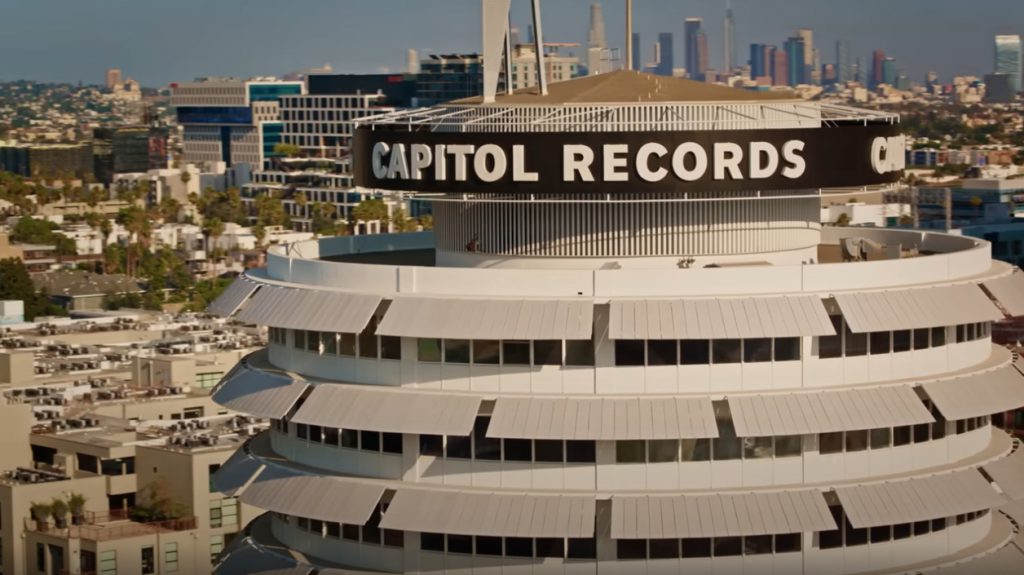

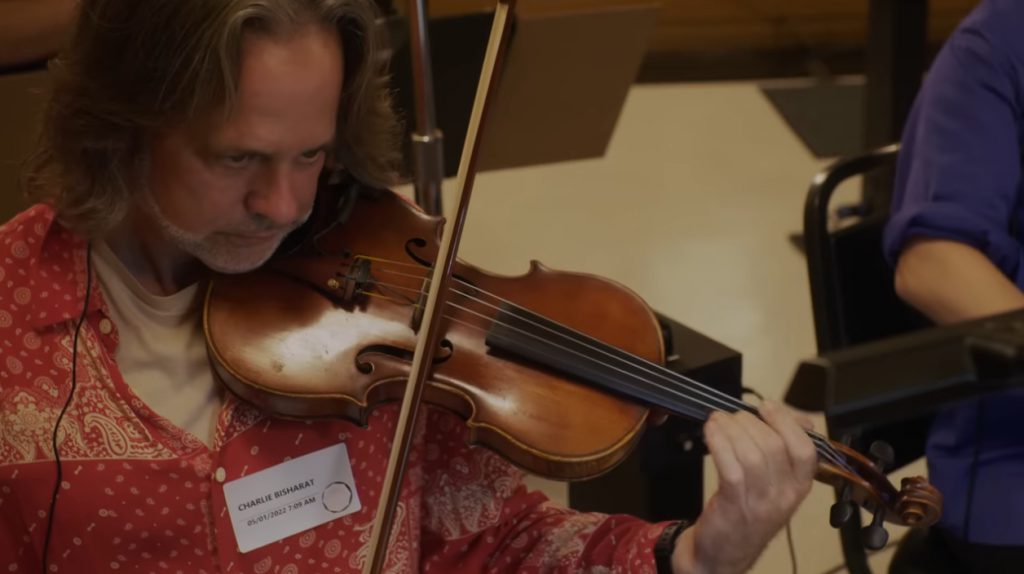
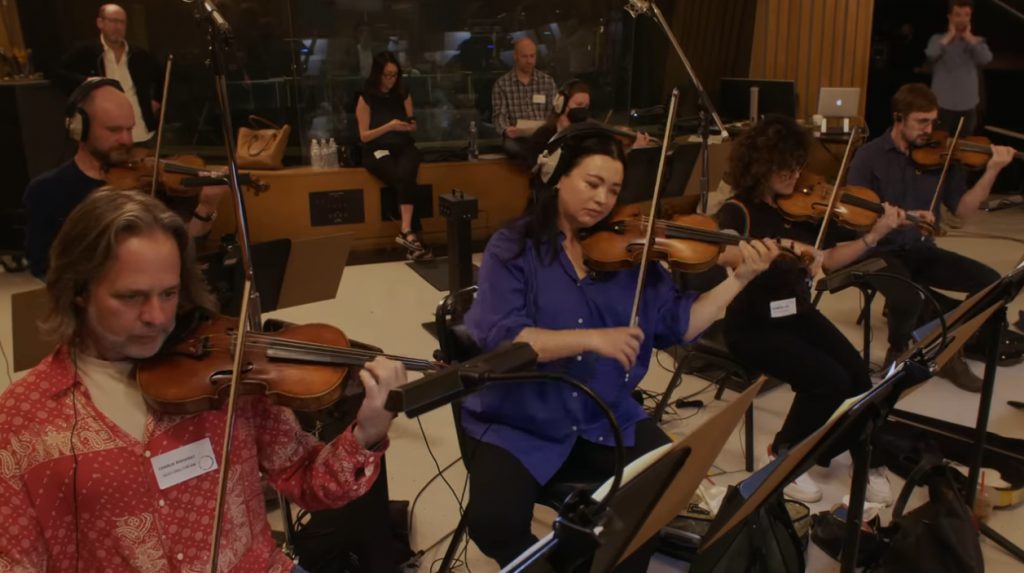
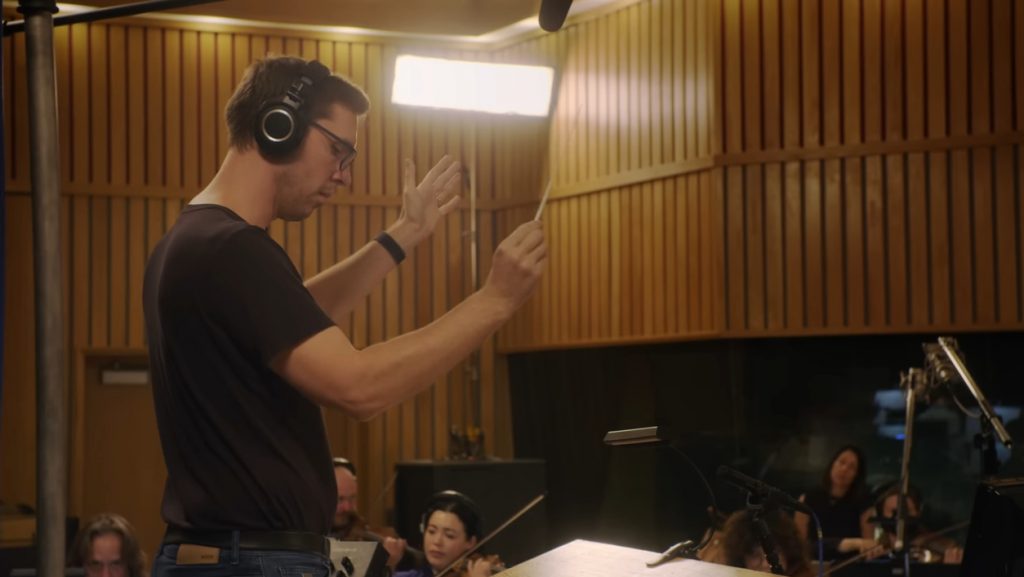
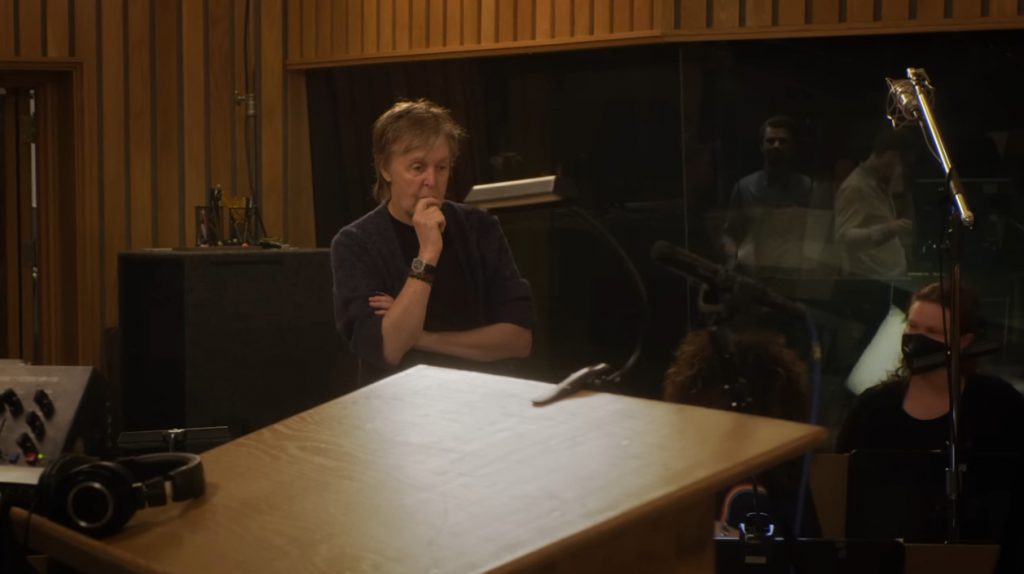
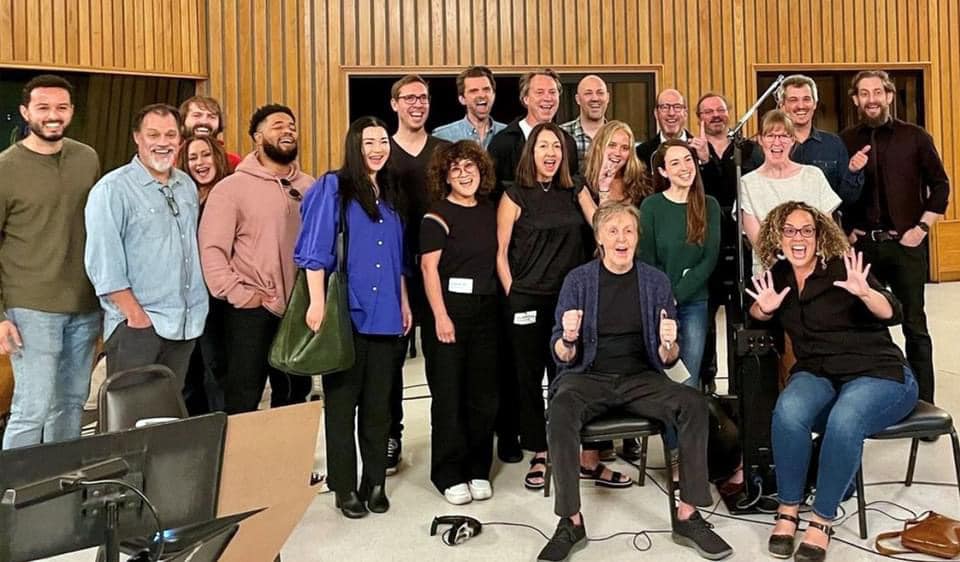
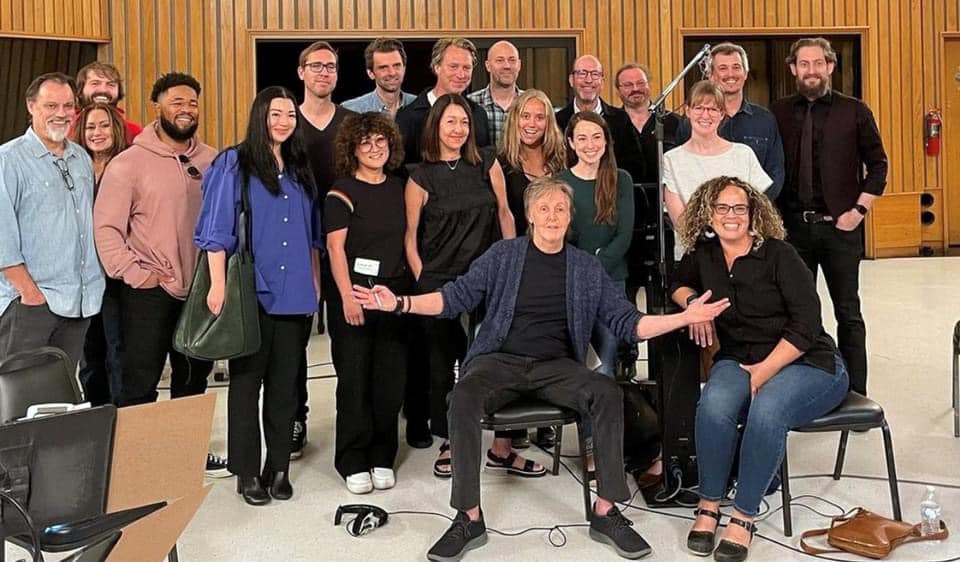
From CBC News, November 7, 2023:
It had been a melancholic morning for Erika Buckman. She put on her late daughter’s scarf, contemplating how much she missed her. Then the phone rang. And she learned astonishing news involving her daughter, Caroline Buckman, who was born in 1974, and died a few months ago, in March. A caller informed her: Your daughter is on a new Beatles record.
The family hadn’t known. Before she died, Caroline never found out either. This was the result of a project so secretive its details were guarded from her and other musicians involved. When she heard the news last Friday morning, Erika Buckman replied, “You’re going to make me cry.”
Born in Charlottesville, Va., her daughter became a violist in Los Angeles, a studio musician who unwittingly worked on what has been called the final song from the band widely regarded as the most influential of all time. […]
Buckman, 81, envisioned her daughter’s reaction, had she learned she’d played on the last song ever released by the Beatles: “She would have been delirious [with joy] about it.” She acknowledged her own conflicting emotions, with her daughter claimed by cancer before she could share in this news. “It is sad,” Erika Buckman said. On the other hand, she said, “I’m very proud.”
A cryptic message went out to over a dozen musicians in late April 2022. A Los Angeles-based music contractor asked if they could be in the studio in three days. The message said: This involves Paul McCartney.
Musicians were offered what’s known in the business as “a single,” a three-hour contract where they’d be paid the union rate of a few hundred bucks. Musicians dropped everything to be there.
“Of course we all want to do it,” said violinist Charlie Bisharat, recalling how he and some colleagues rescheduled other appointments.
Cellist Mia Barcia-Colombo raced across the country. She had a concert in Miami the night before the session, a morning session, three time zones away. She finished the show in Florida, cabbed it to the airport, got a red-eye flight to Los Angeles, landed at 6 a.m., then asked if she could crash for 90 minutes at her parents’ place because they live closer than her to the studio. “It became kind of a family affair to get me there on time,” she said. “[My folks were] like, ‘Anything for Sir Paul!’“
As they arrived at Capitol Studios, musicians were given sheet music, under a non-existent song title: Give & Take. This was a decoy name. The musicians were told this was a McCartney solo project, to keep them from spilling the secret. “It was all a bit hush-hush,” McCartney recalled in a new documentary. […]
“A lovely man,” Bisharat said. “You can’t say that about every artist.”
Some celebrity artists, said Barcia-Colombo, spend the whole session detached from the musicians, ensconced in the control booth. At one point, a conductor asked McCartney if he wanted to go sit in the booth. The cellist recalls his reply: “No, this is where the magic happens.… I just wanna sit here and enjoy it.“
After spending the whole three-hour session with the musicians, McCartney chatted with them, posed for pictures and signed autographs. Then they waited for updates on the project. And they waited some more. Over an 18-month span, Bisharat kept searching online, failing to find any news, and he eventually started wondering: “What happened? Was that a demo?”
In any case, the musicians already had their souvenirs. Caroline Buckman arrived home, elated, with a copy of the sheet music signed by McCartney. She had it framed, said her longtime partner. “She was super-thrilled,” her boyfriend, Mitch Brown, recalled. “She said, ‘I played with Paul McCartney today.’… In her entire career, she’d never asked a colleague [for an autograph].” […]
When she recorded that session with McCartney, she’d been battling breast cancer for five years. She’d struggled through chemotherapy, and a pharmaceutical regimen, but, Bisharat said, she never complained. “She was still upbeat,” he said. Less than a year later, she was gone. She died in L.A. on March 5, 2023, at age 48. People mourned her as a daughter, a musician, sister, partner, friend. One final line, however, was etched only belatedly into her epitaph: For four minutes and eight seconds, the length of one improbable song, Caroline Buckman was a Beatle.
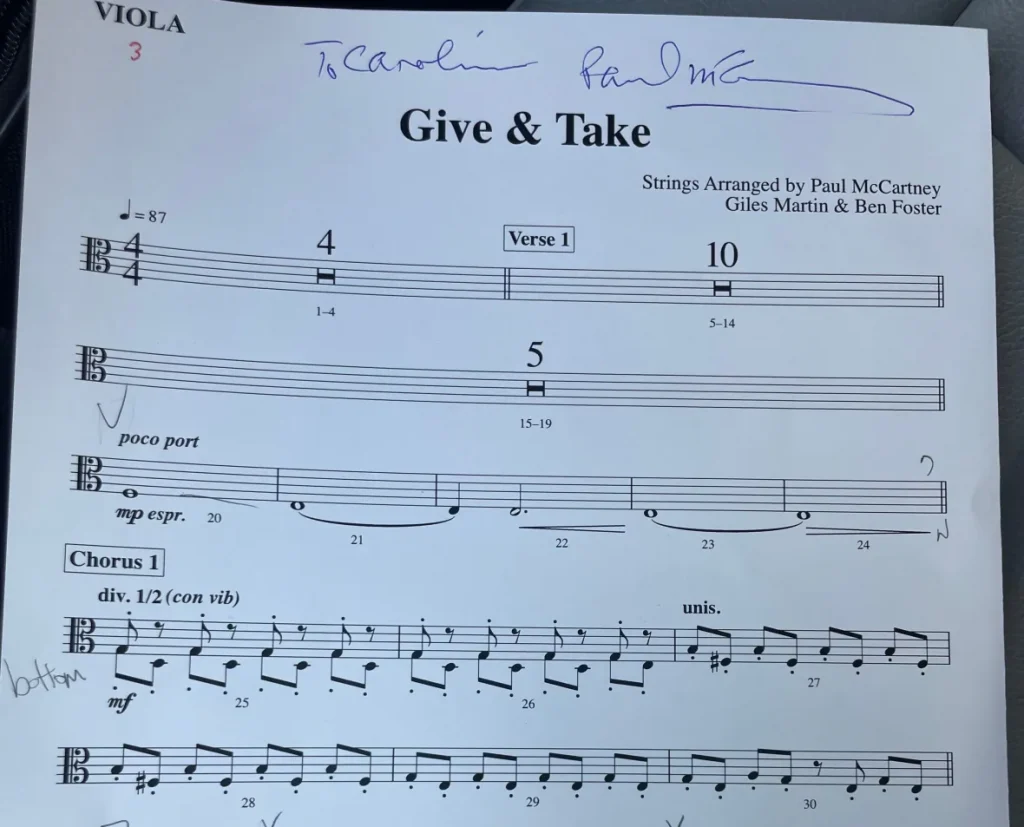
Last updated on November 11, 2023
Staff
Musicians
- Songa Lee:
- Violin
- Serena McKinney:
- Violin
- Charlie Bisharat:
- Violin
- Giovanna Clayton:
- Cello
- Mia Barcia-Colombo:
- Cello
- Niall Ferguson:
- Cello
- Mike Valerio:
- Double Bass
- Caroline Buckman:
- Viola
- Drew Forde:
- Viola
- Linnea Powell:
- Viola
- Adrianne Pope:
- Violin
- Andrew Bulbrook:
- Violin
- Neel Hammond:
- Violin
Going further
The Complete Beatles Recording Sessions • Mark Lewisohn
The definitive guide for every Beatles recording sessions from 1962 to 1970.
We owe a lot to Mark Lewisohn for the creation of those session pages, but you really have to buy this book to get all the details - the number of takes for each song, who contributed what, a description of the context and how each session went, various photographies... And an introductory interview with Paul McCartney!

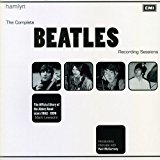
Contribute!
Have you spotted an error on the page? Do you want to suggest new content? Or do you simply want to leave a comment ? Please use the form below!